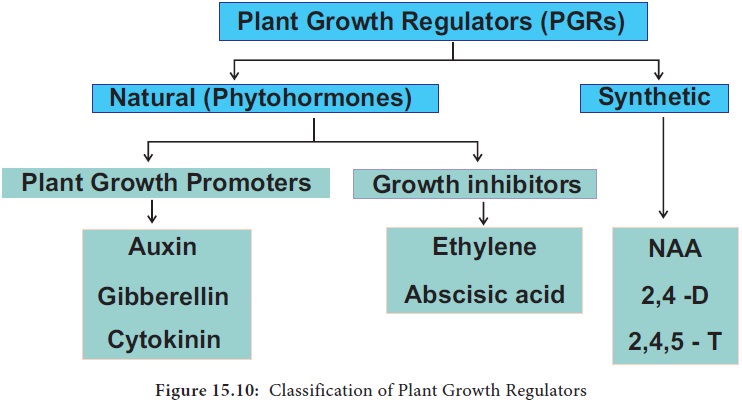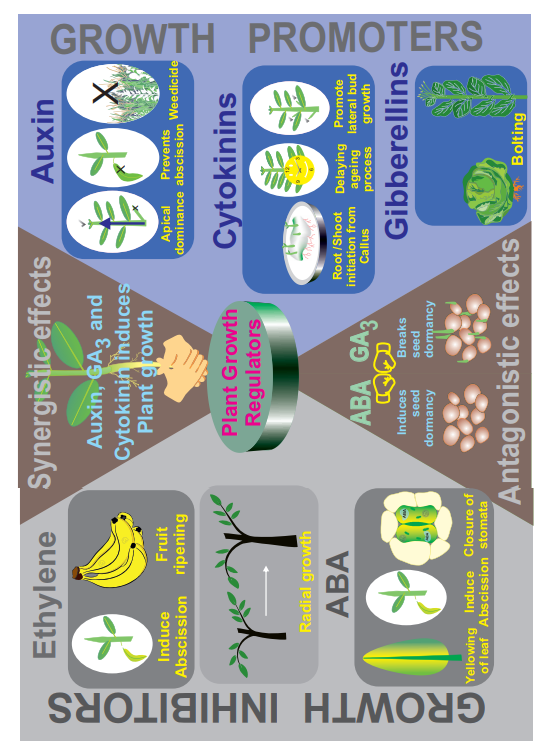Discovery, Occurrence, Transport, Physiological Effects, Agricultural role - Abscisic Acid (ABA) (Stress Phyto Hormone) - Natural Plant Growth Regulators (PGRs) | 11th Botany : Chapter 15 : Plant Growth and Development
Chapter: 11th Botany : Chapter 15 : Plant Growth and Development
Abscisic Acid (ABA) (Stress Phyto Hormone) - Natural Plant Growth Regulators (PGRs)
Abscisic Acid (ABA) (Stress
Phyto Hormone)
1. Discovery
In 1963,
the hormone was first isolated by Addicott
et
al., from young cotton bolls and named as Abscission II. Eagles and Wareing during 1963–64 isolated a
dormancy inducing substance from leaves of Betula
and called it as dormin. In 1965, it was found by Cornsforth et al., that both dormin and abscission
are chemically same compounds and called Abscisic
Acid (ABA).
2. Occurrence
This
hormone is found abundantly inside the chloroplast of green cells.
3. Precursors
The
hormone is formed from mevalonic acid pathway or xanthophylls.
4. Transport in plants
Abscisic
acid is transported to all parts of the plant through diffusion as well as
through phloem and xylem.
5. Chemical structure
It has
carotenoid structure.
6. Bioassay (Rice Coleoptile)
The
inhibition of IAA induces straight growth of rice seedling coleoptiles.
7. Physiological effects
•
It helps in reducing transpiration rate by closing
stomata. It inhibits K+ uptake by guard cells and promotes the
leakage of malic acid. It results in closure of stomata.
•
It spoils chlorophylls, proteins and nucleic acids
of leaves making them yellow.
•
Inhibition of cell division and cell elongation.
•
ABA is a powerful growth inhibitor. It causes 50%
inhibition of growth in Oat coleoptile.
•
It induces bud and seed dormancy.
•
It promotes the abscission of leaves, flowers and
fruits by forming abscission layers.
•
ABA plays an important role in plants during water
stress and during drought conditions. It results in loss of turgor and closure
of stomata.
•
It has anti-auxin and anti-gibberellin property.
•
Abscisic acid promotes senescence in leaves by
causing loss of chlorophyll pigment decreasing the rate of photosynthesis and
changing the rate of proteins and nucleic acid synthesis.
8. Agricultural Role
·
In Cannabis
sativa, induces male flower formation on female plants.
·
Induction of flowers in short day plants.
·
It promotes sprouting in storage organs like
Potato.
·
ABA plays an important role in plants during water
stress drought conditions.
·
It inhibits the shoot growth and promotes growth of
root system. This character protect the plants from water stress. Hence, ABA is
called as stress hormone.


Related Topics